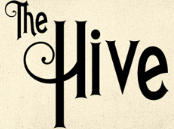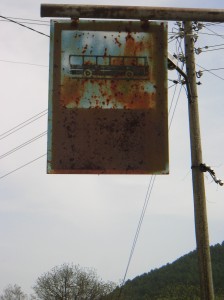 I first encountered Tom Pow’s dying villages work at the Edinburgh Poetry Library, on a tour with the Poetry Translation Centre. I was fascinated by the Cornell-like collections of simple objects, small shrines to the lives once lived in the villages in which they were found. Very curious about his project, I bought two small books, the letterpress-printed Songs from a Dying Village and the equally beautiful Cean Loch Reasort and Other Dead Village Walks, both printed in limited editions. Shortly thereafter, Tom and I began the email correspondence that eventually led to this conversation.
I first encountered Tom Pow’s dying villages work at the Edinburgh Poetry Library, on a tour with the Poetry Translation Centre. I was fascinated by the Cornell-like collections of simple objects, small shrines to the lives once lived in the villages in which they were found. Very curious about his project, I bought two small books, the letterpress-printed Songs from a Dying Village and the equally beautiful Cean Loch Reasort and Other Dead Village Walks, both printed in limited editions. Shortly thereafter, Tom and I began the email correspondence that eventually led to this conversation.
Tom Pow is very much a multidisciplinary poet and artist, as he explains below, and the photographs that accompany this interview were taken on his travels through the dying villages of Europe, as part of his series “Signs of a Dying Village.”
DS
OOO
Tell me, briefly, about dying villages. What are they?
It is estimated that by 2030 Europe will lose roughly one third of its population, the greatest demographic change since the Black Death. The effects of depopulation will be felt most acutely in rural areas, as a result of high levels of emigration to cities and low birth rates. Europe is home to 22 of the world’s 25 lowest birthrate countries, so there are many areas where villages are dying. I travelled to northern Spain, central France, southern Italy, eastern Germany, Bulgaria and central Russia. In Russia, for example, according to recent statistics, 11,000 villages and 290 cities have disappeared from the map of the Russian Federation. 13,000 villages remain on the map, but have no inhabitants. I came across a village there with one surviving inhabitant. This is not unusual.
How did you hear of them? How did that initial impulse—the spark of interest in the dying villages—evolve into the project it now is?
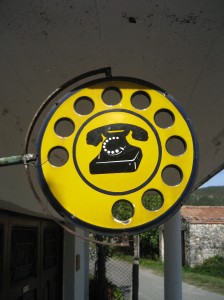 I was in Edmonton for the 30th anniversary of the University of Alberta’s Writing Program for which I’d been a visiting fellow in the early 90s. There was an article in the Edmonton Journal, with the title Withering Heights. It was about a village in northern Spain called Villabandin which had a handful of inhabitants all in their 60s and older. I learned that the phenomenon of the dying village is widespread in Europe and the subject gripped me—history, memory, loss, identity: very Scottish themes, I think! I was given a Creative Scotland Award, which funded my research trips and I began at Villabandin.
I was in Edmonton for the 30th anniversary of the University of Alberta’s Writing Program for which I’d been a visiting fellow in the early 90s. There was an article in the Edmonton Journal, with the title Withering Heights. It was about a village in northern Spain called Villabandin which had a handful of inhabitants all in their 60s and older. I learned that the phenomenon of the dying village is widespread in Europe and the subject gripped me—history, memory, loss, identity: very Scottish themes, I think! I was given a Creative Scotland Award, which funded my research trips and I began at Villabandin.
You do more than just write poems, right? You also take photographs, collect artefacts, and more. How does your poetry interact with those other forms or disciplines of remembrance?
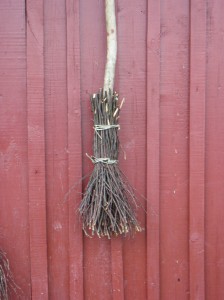 The photographs and the sound recordings were part of the research—they are a kind of noticing. But they also reflect my interests: for example, there are many photographs of doors and windows (thresholds), of what is worn and decayed; the recordings reflect an interest in the texture/the impossibility of silence. The website makes much of this material available. The artefacts grow from the poetry. I see them as physical embodiments of the poems. For example, one of the signs of a dying village is fruit lying unpicked. I came across an arrangement of apples that reminded me of the French game of boules. I showed the photograph to a sculptor and she made three apples on the edge of decay which were then cast in foundry bronze. I call then Boules from a Dying Village. They are beautiful to handle. After they were made, I discovered Gustave Courbet’s still lifes of apples which he painted while in prison. They are acknowledged as rustic memories of the village where he was born and spent his childhood. Each of the artefacts has similarly rich resonances.
The photographs and the sound recordings were part of the research—they are a kind of noticing. But they also reflect my interests: for example, there are many photographs of doors and windows (thresholds), of what is worn and decayed; the recordings reflect an interest in the texture/the impossibility of silence. The website makes much of this material available. The artefacts grow from the poetry. I see them as physical embodiments of the poems. For example, one of the signs of a dying village is fruit lying unpicked. I came across an arrangement of apples that reminded me of the French game of boules. I showed the photograph to a sculptor and she made three apples on the edge of decay which were then cast in foundry bronze. I call then Boules from a Dying Village. They are beautiful to handle. After they were made, I discovered Gustave Courbet’s still lifes of apples which he painted while in prison. They are acknowledged as rustic memories of the village where he was born and spent his childhood. Each of the artefacts has similarly rich resonances.
People love to bemoan the state of poetry; I hate listening to them. Tell me about how the medium of poetry worked (or didn’t) for this project?
John Berger writes, in And Our Faces, My heart, Brief as Photos, that prose is a battle and that poetry moves through the battlefield tending the wounds. Poetry can still the narrative, so that something can be looked at and considered—given due attention. Some of the pieces I wrote were very short—poems of three or four lines. They are sequences with, I hope, a cumulative power. But each of them offers a threshold into the world of the dying village:
She’s sitting on the old green bench
by the side of the lilac tree.
Oh, the songs she once sung here!
The thought of them still makes her blush.OOOO(from Songs from a Dying Village)
Did the project—and especially the travel portion of it, actually visiting these communities—affect your writing? What did you learn?
 Of course. The small poem above is part of a sequence that drew on the Russian folk poem, the chastushka, a short lyric that was sung and that reflected village life. So common was it that the Soviets high-jacked it and used it as a way of spreading propaganda. My poems drew on what I read, but also on field work in Russia, listening to old women singing these songs.
Of course. The small poem above is part of a sequence that drew on the Russian folk poem, the chastushka, a short lyric that was sung and that reflected village life. So common was it that the Soviets high-jacked it and used it as a way of spreading propaganda. My poems drew on what I read, but also on field work in Russia, listening to old women singing these songs.
What’s the future of the dying villages project?
I have begun a series of intimate engagements, using my Suitcase of the Dying Village. These are events/presentations round a table of 12-15 people. I share photographs, artefacts, recordings, read poems and tell stories relating to the project. There is always time to engage with others’ experiences and memories and there is opportunity for them to write very briefly about their connection with a (dying) village. At one of these events, after the presentation, we served soup, bread and cheese. I like to think I am creating a space for people to engage with the subject in their own ways. And I suppose there is something about the intimacy that fits the subject. On the other hand, I have also given talks/lectures to fairly large audiences about the subject. I am working on a book about dying villages in Europe, which will be published in 2011. The book will contain travel essays, poems and short stories. But I’d like to go on one further dying villages trip.
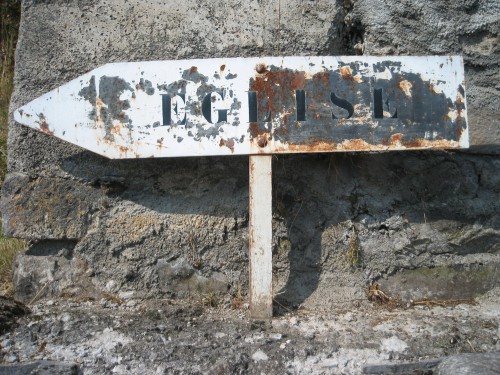 What do you take with you on the road? Any specific books or albums? Have you picked up anything great recently?
What do you take with you on the road? Any specific books or albums? Have you picked up anything great recently?
Travelling can be a good time to read things you’ve been meaning to read for some time and never got round to. On one of the trips I took Gaston Bachelar’s The Poetics of Space. It started me writing a sequence of short poems about nests. I’d thought they were an escape from the enormity of the dying villages project. But I came to realise that nests are intimately connected to the themes of home and of abandonment that are at the heart of dying villages.
A nest is a blessing
for a tree and a prayer
upon the water.
December 2010
